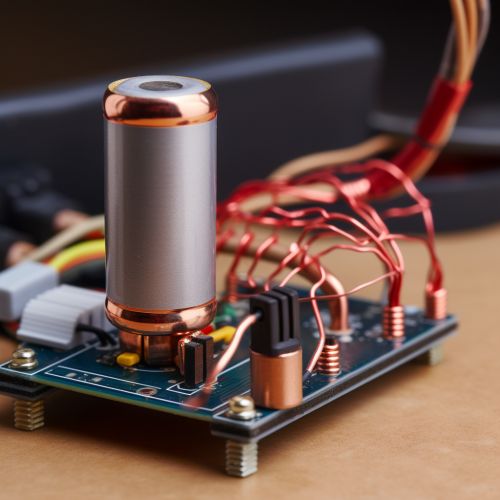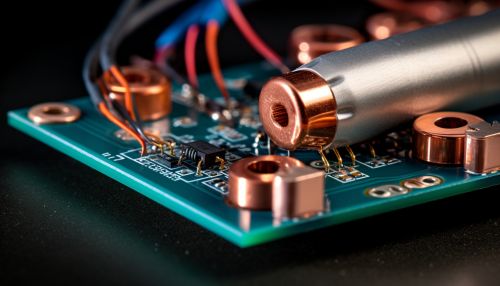Ohm's Law
Introduction
Ohm's Law is a fundamental principle in the field of electrical engineering and physics that establishes a relationship between voltage, current, and resistance in an electrical circuit. Named after the German physicist Georg Simon Ohm, this law is a cornerstone of modern electrical and electronic theory.
History
Georg Simon Ohm, a German physicist and mathematician, first formulated Ohm's Law in 1827. His work, "Die galvanische Kette, mathematisch bearbeitet" (The Galvanic Circuit Investigated Mathematically), detailed his complete theory of electricity. Despite initial resistance from the scientific community, Ohm's work eventually became a foundational principle in electrical engineering.
Statement of the Law
Ohm's Law states that the current passing through a conductor between two points is directly proportional to the voltage across the two points, and inversely proportional to the resistance between them. This relationship is commonly expressed as:
- I = V/R
where:
- I is the current in amperes (A),
- V is the voltage in volts (V), and
- R is the resistance in ohms (Ω).
Mathematical Derivation
Ohm's Law can be derived from the fundamental laws of electromagnetism. The law follows from Maxwell's equations, specifically from the equation for the conservation of charge, and the Lorentz force law.


Applications
Ohm's Law is used extensively in electrical engineering and physics to design and analyze electrical circuits. It is also used in the field of electronics to design and analyze electronic circuits, and in the field of telecommunications to design and analyze communication circuits.
Limitations
While Ohm's Law is a fundamental principle in electrical engineering, it has its limitations. It does not apply to all materials or to all situations. For example, it does not accurately describe the behavior of semiconductors, such as diodes and transistors, which are used extensively in modern electronic devices.
